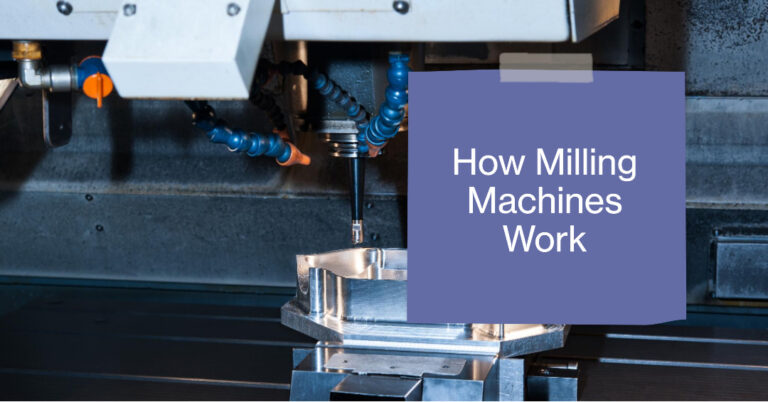How to Calculate Lathe Speed Chart? – Find Out!

When I first got into woodworking and metalwork, I was swamped with technical terms and charts. But one thing caught my eye the ‘Lathe Speed Chart.’ It’s a must-have for anyone in the craft.
Knowing this chart can make a big difference in the quality of your work. It’s all about accuracy and safety. Think of it like a musician knowing the right beat to hit the perfect note.
This guide will make that chart easy to understand, so you can craft with confidence.
How to Calculate Lathe Speed Chart
Figuring out lathe speed can feel overwhelming due to all the numbers. But don’t worry, it gets easier much like learning to ride a bike.
The main goal of these calculations? Find the speed that’s best for both your tool’s lifespan and your project’s finish. Nailing this is crucial for your project’s success.
What are Lathe Speeds?
Lathe speeds are all about the rotations per minute (RPM) your workpiece makes on the lathe.
Imagine it as the rhythm between your material and your tools. When they’re in sync, you cut, shape, or finish with efficiency.
Different materials like metal, wood, or plastic have their own ideal speeds. That’s where our handy chart steps in.
What is Cutting Speed?
Think of cutting speed as the rhythm to the lathe speed’s dance. It’s how fast the cutting tool moves over what you’re working on.
Picture combing your hair. Go too fast, you’ll miss knots; too slow, you might pull hair out. Just like that, the right cutting speed helps your tool work with the material smoothly, giving you a perfect finish every time.
Now that you’ve got the basics down, let’s explore the finer points of woodturning.
Woodturning Lathe Speed Chart
Woodturning sets itself apart with its own set of challenges and perks. The key? Knowing your wood type, its size, and what you want the end result to be.
Think of the Woodturning Lathe Speed Chart as your go-to advisor. It offers advice that’s just right for you.
Working with a 2-inch softwood? You’ll need a different speed than for a 10-inch hardwood.
This chart gives you exact RPM numbers for various wood types and sizes, helping you get that flawless finish every time.
How to Calculate Wood Lathe Speed
Time for a little math, but let’s keep it straightforward. Here’s your formula for wood lathe speed:
RPM = π x Cutting Speed x 12 / Workpiece Diameter
Where:
- RPM is the Revolutions Per Minute.
- Cutting Speed is given in feet per minute (often provided in the chart for various woods).
- The diameter of the workpiece is in inches.
- And, π (pi) is approximately 3.14159.
To make this more straightforward, let’s take an example. Say you have a softwood with a cutting speed of 1000 feet per minute, and it’s 8 inches in diameter. Plug in the numbers, and you’ll get your desired RPM.
It’s a practice and patience game, but once you get a feel for it, it’s like second nature.
What if Vibration Is Present?
Facing some vibrations? Don’t sweat it. It’s just a sign that something needs adjusting. Vibration could be due to a few things:
- Imbalanced Workpiece: Think of a wobbly washing machine. If your workpiece isn’t balanced, it’ll shake. Reposition it or make sure it’s secure.
- Unstable Lathe: Ensure your lathe is flat and, if needed, bolt it down.
- Dull Tools: Blunt tools can snag the wood, causing shakes. Make sure they’re sharp.
- Too Fast Speed: Even if the chart says so, the speed might be too high for your wood. Trust your gut and dial it down if needed.
Vibrations aren’t just annoying; they’re a safety risk. So deal with them head-on. Remember, good woodworking blends intuition with precision.
What is the Best Lathe Speed?
What’s the best lathe speed? Well, that’s like asking the best driving speed it depends. Your ideal lathe speed is a mix: the material you’re using, the size of the piece, and the finish you want.
Generally, hard materials need slower speeds, and soft ones can go faster. But that’s just a starting point. Tailoring these speeds to your unique project is where the magic happens. That’s why a detailed lathe speed chart is your best friend.
Does Speed Matter?
Does speed matter? You bet. Think of it like icing a cake. Go too fast or slow, and it’s a mess.
- Finish Quality: The right speed helps you get that sleek, polished look.
- Tool Life: Using the right speed saves your tools from wearing out too quickly.
- Safety: Can’t stress this enough—wrong speed choices can be risky, from chips flying to pieces coming off the lathe.
So, speed isn’t just a number it’s the essence of good craftsmanship.
Speed and Feeds Chart
The speeds and feeds chart is your other go-to guide, right next to the lathe speed chart.
- Purpose: While the lathe speed focuses on the workpiece RPM, this chart tells you how quickly to move the cutting tool and at what depth.
- Roadmap for Harmony: It’s like a roadmap, making sure your tool and material get along well, so you get the best outcome.
- No Guesswork: Different materials have their ideal rates. This chart removes the guesswork, especially when you’re dealing with new materials.
So, arm yourself with a speeds and feeds chart and let precision take the lead.
Calculating the Lathe RPM
Don’t fret over calculations. The RPM formula is your go-to for setting the right speed on your lathe. Here it is, simplified:
RPM = Diameter of Workpiece / (π × Cutting Speed × 12)
Keep this formula close; it works for most materials. Cutting speed varies based on whether you’re working with wood, metal, or something else.
Small Objects Tolerate Higher RPMs
You’ve seen how a spinning top whizzes around without a fuss. Similarly, small workpieces can handle faster RPMs. Less surface area means less resistance and lower chances of wobbling.
Bigger Objects Require Lower RPMs
Larger pieces require you to pump the brakes. They resist more and are likely to wobble due to their size. Always start at a lower RPM than suggested. Take your time to ensure a safe and quality finish.
Safety Tips to Remember
Safety first, always. Whether you’re a pro or a newbie, here are your must-follow safety rules for lathe work:
- Gear Up: Don’t skip the safety goggles. They’re your best friends against flying debris. For larger pieces, add a face shield to the mix.
- Tidy Space, Safer You: Mess leads to stress—and accidents. Keep your tools in order and clear away any shavings or clutter around your lathe.
- Secure the Workpiece: Before hitting ‘start,’ make sure your workpiece is tightly fastened. Trust me, you don’t want it airborne.
- Eyes on the Prize: Daydreaming and lathes don’t mix. Stay alert. If something feels weird, pause and figure it out.
- Sharp Tools, Smooth Sailing: Blunt tools are more than ineffective; they’re hazardous. Keep ’em sharp for a snag-free experience.
- Dress Smart: Loose clothing and jewelry are a recipe for disaster. Opt for fitted wear and ditch the bling.
- Ease Into Speed: Ignore the chart for now. Start slow, then gradually pick up the pace.
Safety is a lifestyle, not a checkbox. Embrace it, and you’ll enjoy the craft as much as the masterpiece you create.
Conclusion
Working with a lathe isn’t just about spinning metal or wood. It’s a mix of accuracy, gut feeling, and, most importantly, safety. Think of your Lathe Speed Chart not just as numbers, but as your guide to quality and safety.
Know your material. Understand your tool. Find the rhythm that makes both sing.
Whether you’re starting out or have years under your belt, never compromise on safety. Because every turn you make on that lathe brings you one step closer to perfection.
Frequently Asked Questions
Why Is Spindle Speed Faster than Lathe Speeds?
Spindle and lathe speeds often need clarification, but they serve different purposes. The spindle speed refers to the RPM of the lathe spindle, which holds the workpiece. In contrast, the lathe speed often denotes the rate at which the cutting tool interacts with the material. Due to the varying diameters and tools, spindle speeds can sometimes be faster to achieve the desired cutting effect.
Is It Better to Cut Aluminum Fast or Slow?
Aluminum is a softer metal, which means it can be cut faster than harder metals. However, the “fast” or “slow” cutting speed largely depends on the desired finish, tool longevity, and safety. It’s always advised to refer to a lathe speed chart specific to metals and start at a conservative speed, gradually increasing based on the results and the tool’s response.
What is the Best Lubricant for Cutting Aluminum?
When cutting Aluminum, using a lubricant can prevent the material from adhering to the cutting tool and prolong tool life. Kerosene or specialized cutting fluids designed for Aluminum are often recommended. Ensure the lubricant is applied evenly and consistently for the best results.






